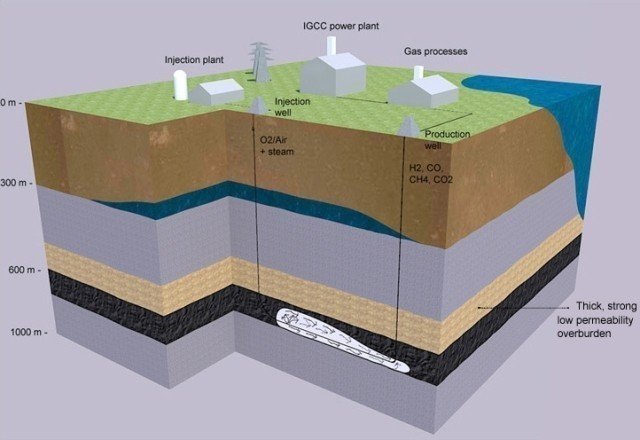WP 10: Unconventional Gas
Led by: Prof Hywel R Thomas, Cardiff University

Overview
Meeting the challenges of maintaining a secure and affordable energy supply is more important than ever, especially in the context of the transition to a less carbon intensive energy mix. Unconventional gas technologies such as Coal Bed Methane (CBM) and Underground Coal Gasification (UCG) have the potential to contribute to future energy needs in a cleaner and safer way while they permit access to coal seams which either lay too deep or otherwise too costly to be exploited by conventional mining.
Extracting Coal Bed Methane from underground coal seams is of significant importance to a world in need of clean energy supplies. In its pure form methane is the cleanest-burning hydrocarbon and, as such, CBM offers a clean alternative energy source. Underground Coal Gasification is a promising option for the future use of un-worked coal to obtain the energy contained in the fuel for use on the surface, without mining in the usual sense of the term. Both CBM and UCG have the potential to be linked with the carbon capture and sequestration resulting in optimum, safe, responsible and environmentally sound production of unconventional gas.
This work package aims to make significant advances beyond “state of the art” and evaluate the potential for deep lying coal seams for the development of UCG and CBM for the optimum production of natural gas which can be fed into a Combined Cycle Gas Turbine (CCGT) power plant or integrated into the national gas pipeline network. Also, the synergies for utilizing the carbon dioxide derived from such processes will be addressed with the aim to provide a source of clean energy with a near zero carbon footprint. By developing the knowledge and know-how, not only will Wales reap the short term benefits of secure energy supplies and economic growth but will also position itself at the forefront of this emerging worldwide technology within the next decade to come.
By focusing on state of the art experimental tests, advanced multi-scale and multi-physics computational modelling, techno-economic assessments and field tests, the work package aims to demonstrate the competiveness of the technology. Being delivered by Cardiff University’s Geoenvironmental Research Centre (GRC) in partnership with British Geological Survey (BGS), the research plans include:
• Development and validation of advanced multi-scale and multi-physics computational models to account for the coupled processes and interactions at the coal seams and surrounding near and far-fields experienced during the UCG operation and CBM production processes.
• Site characterisation and geological and hydro-geological modelling
• Small-scale and large-scale experimental verification of the production of natural gas oriented from UCG and CBM
• Assessment of the technological processes, overall process integration and economical modelling
• Investigations into the environmental aspects and risks associated with the unconventional gas exploration activities
• Collaborating with industrial partners, including TATA, at technology demonstration
COMPASS
Extensive computational modelling expertise and facilities are at the heart of much of the GRC’s activities. The in-house developed numerical model, COMPASS, is capable of high performance simulations of three-dimensional multiphase, multicomponent reactive transport in geomaterials. The model has been developed over the last 30 years using a coupled thermal, hydraulic, biogeochemical and mechanical formulation.
Multipurpose Gas Laboratory
The Centre’s Multipurpose Gas Laboratory features high pressure gas sorption and flow measurement units, with an ancillary system comprising a pure and mixed gas supply, syringe pumps for supercritical carbon dioxide injection, a backpressure regulator, and a gas analysing unit. This apparatus is highly versatile, enabling the study of a wide range of phenomena critical to establishing the viability of carbon sequestration in the deep geoenvironment, particularly in coal seams.
Bespoke High Pressure High Temperature Rig
The Centre’s Bespoke High Pressure High Temperature Rig simulates the UCG process including each UCG zone individually for a broad range of underground conditions providing gasification or environmental data. The gasification of coal with a combination of gasifying agents at different pressures and temperatures can assess the effect of operation variables providing information on process parameters, such as gas yield, carbon conversion, cold gas efficiency, heating value of the gas, pressure and temperature operation limits together with the re-activities of the coal, and quantify and analyse the resulting contaminants.
Dr Renato Zagorscak
Dr Sivachidambaram Sadasivam
Mr James Whittaker
Partnered with British Geological Survey (BGS)


